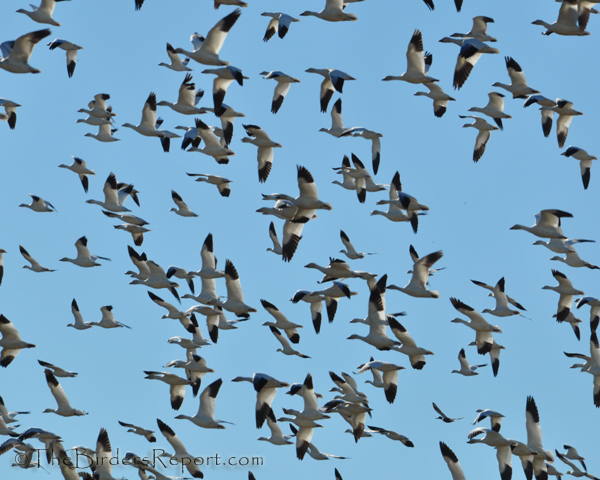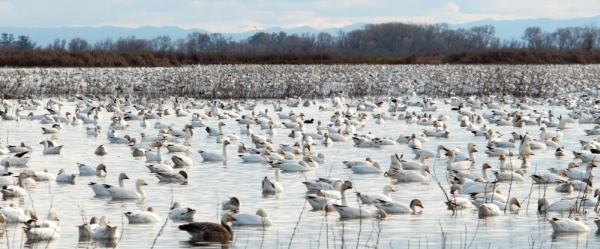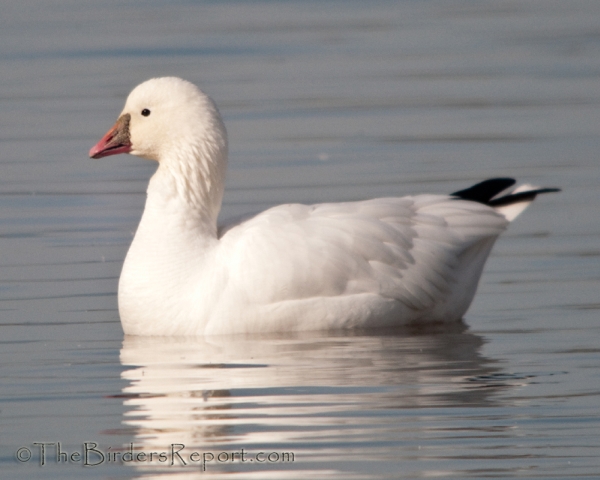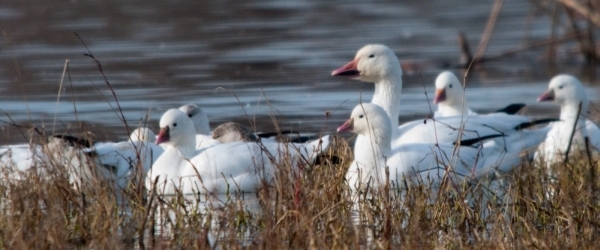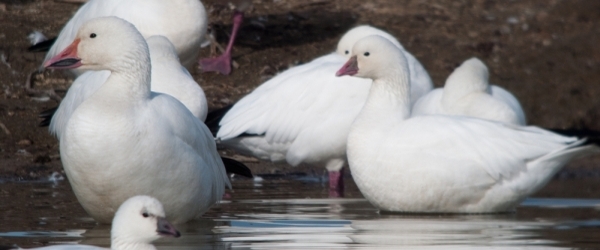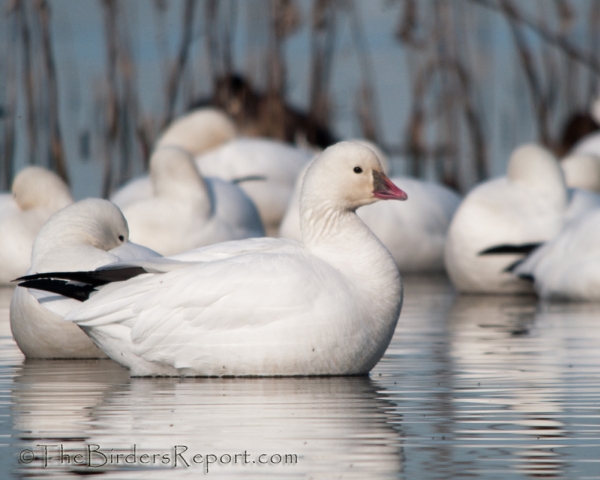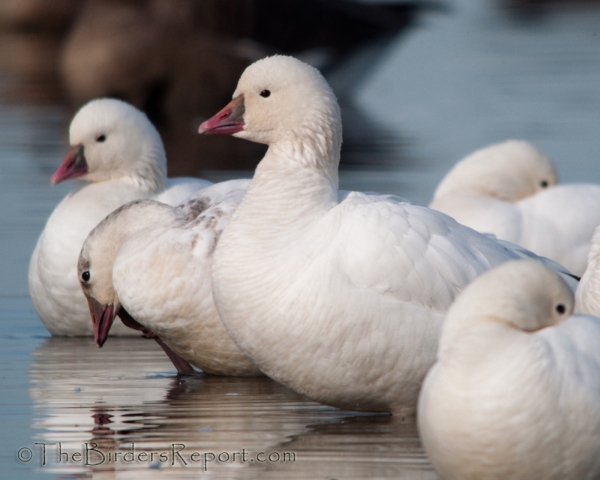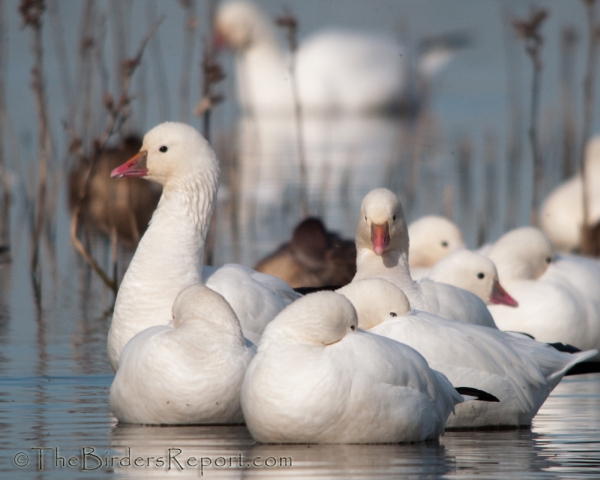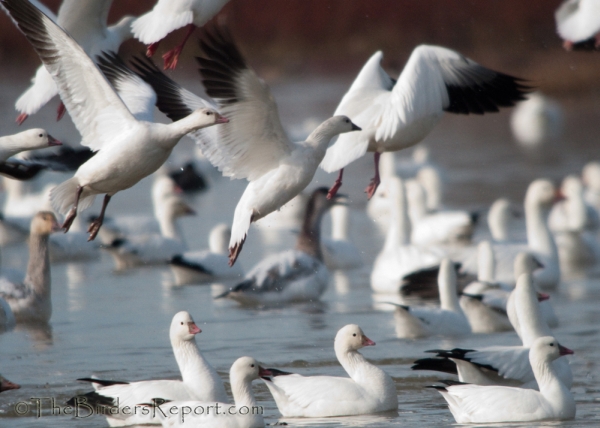Every autumn, tens of thousands of Snow Geese arrive in California’s Sacramento Valley following their long journey from the Canadian Arctic (click on photos for full sized images).
Waterfowl numbers at the Sacramento National Wildlife Refuge Complex may exceed two million by December, after the wetland areas of the Klamath Basin and other areas to the north become frozen. Snow and Ross’s Geese winter there in the tens of thousands.
Currently, about 95 percent of all Ross’s Geese nest in the Queen Maud Gulf Migratory Bird Sanctuary in the central Canadian Arctic. The main wintering area for Ross’s Goose (Chen rossii) is presently in the Central Valley of California, though increasing numbers winter in Arkansas, Louisiana, New Mexico, Texas, and the north-central highlands of Mexico1. Map courtesy of Terry Sohl at South Dakota Birds and Birding.
The Ross’s Goose is the smallest variety of the white geese that breed in North America. They look like a small Snow Goose but they have a shorter neck and a rounder head. At the base and sides of its smaller beak, the Ross’s Goose has species-specific vascular wartlike protuberances or caruncles which become more prevalent with age1 (more apparent on full sized image).
They also lack the “grinning black lips” of their larger Snow Goose cousin.
They are fairly easy to tell apart in a mixed flock by their size and the lack of the “black grin”
Their heads are usually whiter than the larger Snow Goose at winter feeding grounds, probably because their smaller bill is adapted for feeding on short blades and shoots of grasses and sedges as opposed to the roots and tubers the larger geese dig through the mud for.
The bird scratching itself in the background of this photo is a juvenile, still showing some gray feathering on its head and nape.
It looks like nap time for these Ross’s Geese…
at least until something stirs them into flight!
This is a video I shot at the refuge on December 1st, 2013.
References: 1Birds of North America Online

